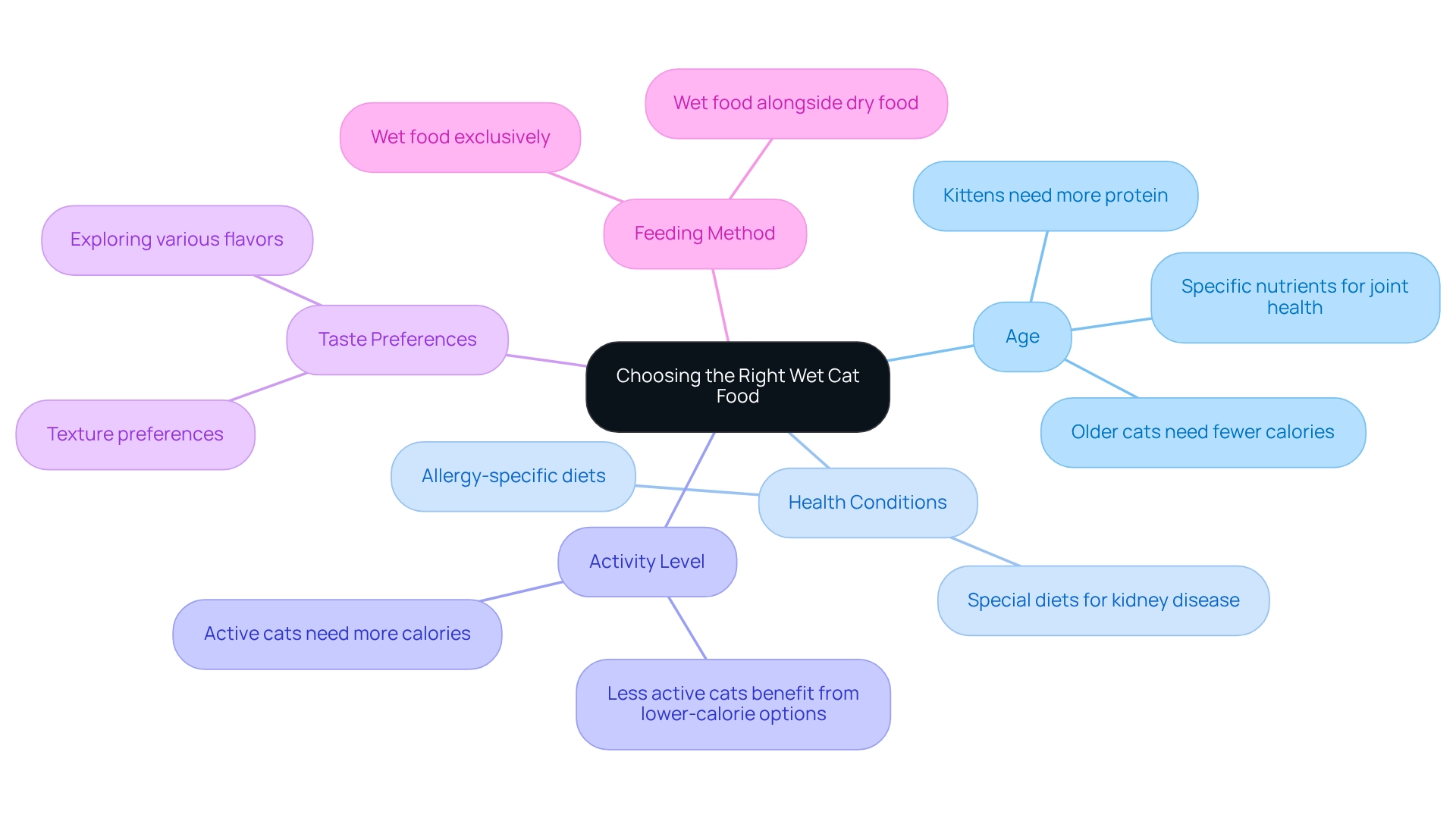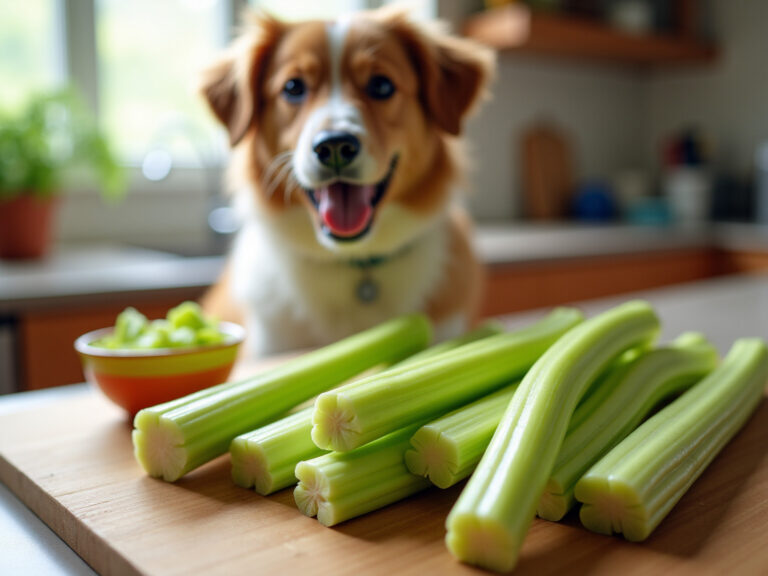Best Wet Cat Food: Key Comparisons for Your Feline’s Needs
Overview
This article lovingly explores how to identify the best wet cat food for your furry family members. By comparing essential factors such as ingredient quality, nutritional balance, and brand reputation, it aims to meet the unique dietary needs of our beloved felines.
It highlights the significance of selecting high-quality protein sources and ensuring adequate moisture content, while also considering any special dietary requirements your pet may have.
Ultimately, this guide is designed to empower you, the caring pet owner, to make informed decisions that contribute to your cats’ health and happiness.
Introduction
In the journey to ensure the best for your furry family members, the selection of wet cat food is crucial. With so many choices available, caring pet owners face the challenge of understanding ingredient quality, nutritional balance, and brand trustworthiness. Recognizing what defines high-quality wet cat food—such as vital protein sources and moisture content—can profoundly influence your cat’s health.
Additionally, exploring specific brands uncovers a range of benefits and drawbacks, tailored to support cats at various life stages and with unique health needs. This guide is designed to empower you with the insights needed to make informed choices, ensuring your beloved companions receive the nutrition they truly deserve.
Understanding Quality and Nutrition in Wet Cat Food
When it comes to your furry family members, the best wet cat food is essential for their well-being. It’s important to choose options that primarily include high-quality protein sources, such as chicken, turkey, or fish. These ingredients play a crucial role in keeping your cat healthy and happy.
Moreover, adequate moisture content is vital—ideally around 75-80%—to ensure that your cats stay hydrated. Since cats naturally have low thirst drives, this moisture helps support their overall health. Don’t forget about essential fatty acids, vitamins, and minerals, which are equally important for their well-being.
As you explore different products, make sure to look for ingredients that are free from artificial preservatives, colors, and fillers. This ensures that the food you choose is both nutritious and palatable for your beloved pet. By understanding these factors, you can make informed choices regarding the best wet cat food that aligns with your cat’s dietary needs and preferences, creating a nurturing environment for them to thrive.
Comparison Criteria: Key Factors for Evaluating Wet Cat Food
When it comes to selecting the best wet cat food, several key factors deserve your attention for your furry family members.
- Ingredient Quality is paramount; always look for named meat sources as the first ingredient. Avoid vague terms like ‘meat by-products,’ as they can leave you wondering about the quality of what you’re feeding your beloved pet.
- Next, consider the Nutritional Balance. It’s essential that the meal meets AAFCO standards for complete and balanced nutrition, ensuring your cat gets all the nutrients they need to thrive.
- Don’t overlook Moisture Content; high moisture levels are vital for hydration, especially for our feline friends who may not drink enough water on their own.
- Understanding Caloric Density is also important. Knowing the calories per serving helps you manage your cat’s weight effectively, keeping them healthy and active.
- Additionally, take a moment to research the Brand Reputation. Investigating a brand’s history and reading customer reviews can provide valuable insights into product reliability and quality, giving you peace of mind.
- Finally, consider any Special Dietary Needs your cat may have. Whether it’s allergies or sensitivities, recognizing these medical issues is crucial for selecting a specialized diet that caters to their unique requirements.
By taking these factors into account, you can create a nurturing environment that supports your pet’s health and happiness.
Brand Comparisons: Pros, Cons, and Nutritional Profiles
When considering the best wet cat food for your furry family members, a comparison of three leading brands highlights their distinct advantages and disadvantages, as well as their nutritional profiles.
-
Royal Canin
- Pros: Formulated specifically for various breeds and health needs, ensuring high palatability for your beloved pets.
- Cons: Generally more expensive; some formulas may include by-products, which could concern some pet owners.
- Nutritional Profile: Features high protein levels, balanced fats, and essential vitamins to support overall health. Consumer reviews indicate a high satisfaction rate among pet owners, particularly for the best wet cat food designed for specific breeds.
- Case Study Insight: A recent case study highlighted that Royal Canin’s targeted nutrition significantly improved health outcomes in cats with specific dietary needs, showcasing its effectiveness.
-
Purina Pro Plan
- Pros: Easily accessible; offers a solid balance of quality and affordability; diverse flavor options cater to different preferences, ensuring your cat enjoys mealtime.
- Cons: Certain formulas may contain fillers; not all products are grain-free, which could be a concern for some pet owners.
- Nutritional Profile: High in protein, moderate in fat, and enriched with probiotics to promote digestive health. Consumer ratings indicate that felines appreciate the assortment of flavors, making it a favored option among pet owners.
-
Wellness
- Pros: Provides grain-free alternatives; utilizes high-quality ingredients without artificial additives, nurturing your cat’s health naturally.
- Cons: Typically pricier than some other brands; availability may be limited in certain areas, which could be a drawback for some.
- Nutritional Profile: High protein content, low carbohydrates, and rich in omega fatty acids, supporting skin and coat health. Reviews often praise its quality ingredients, although some consumers note the higher price point as a drawback.
- Case Study Insight: Research comparing Wellness with other brands showed that its high-quality ingredients led to better overall health in cats over a six-month period, reinforcing its value for your pet’s well-being.
Choosing the Right Wet Cat Food: Tailoring Options to Your Cat’s Needs
When selecting the best wet cat food, it’s important to consider several factors to ensure your furry family members receive the best nutrition possible:
- Age: Kittens require higher levels of protein and fat to support their growth, while older cats may need fewer calories and specific nutrients to promote joint health.
- Health Conditions: If your cat has specific health issues, such as kidney disease or allergies, specialized diets can make a significant difference in their well-being.
- Activity Level: Active cats often need more calories and protein to fuel their energy, whereas less active cats benefit from lower-calorie options to help prevent obesity.
- Taste Preferences: Cats can be quite particular about their food. Exploring various flavors and textures can help you discover what your cat enjoys most, particularly when you consider the best wet cat food for their diet.
- Feeding Method: Think about whether you’ll be feeding the best wet cat food exclusively or alongside dry food; this choice can greatly impact your cat’s overall nutrition and hydration.
By taking these factors into account, you can create a nurturing environment that supports your beloved pet’s health and happiness. Remember, each cat is unique, and understanding their individual needs is key to ensuring they thrive.

Conclusion
Understanding the quality and nutritional requirements of wet cat food is not just essential; it’s a heartfelt commitment to ensuring the health and well-being of your furry family members. High-quality wet cat food should primarily consist of reliable protein sources, ample moisture content, and a balance of essential nutrients. By evaluating ingredient quality, nutritional balance, and brand reputation, you can make informed decisions that cater to your cats’ specific dietary needs.
A thorough comparison of leading brands like Royal Canin, Purina Pro Plan, and Wellness reveals distinct advantages and disadvantages. This allows you to select options that align with both your budget and your cats’ health requirements. Each brand offers unique formulations, catering to various life stages and health conditions, emphasizing the importance of tailoring food choices to the individual needs of your beloved companions.
Ultimately, the journey to finding the right wet cat food involves understanding the intricacies of feline nutrition and making choices that reflect your commitment to your cat’s health. By prioritizing ingredient quality and nutritional balance, you can ensure that your cherished pets receive the best possible care and nourishment, paving the way for a happy and healthy life together.
Frequently Asked Questions
Why is wet cat food important for my cat’s well-being?
Wet cat food is essential for your cat’s well-being as it provides high-quality protein sources and adequate moisture content, which helps keep your cat healthy and hydrated.
What protein sources should I look for in wet cat food?
You should look for wet cat food that primarily includes high-quality protein sources such as chicken, turkey, or fish.
How much moisture content should wet cat food ideally have?
Wet cat food should ideally have a moisture content of around 75-80% to ensure that your cat stays hydrated.
Why is moisture important for cats?
Moisture is important for cats because they naturally have low thirst drives, and adequate moisture in their food helps support their overall health.
What other nutrients are important in wet cat food?
Essential fatty acids, vitamins, and minerals are also important for your cat’s well-being.
What should I avoid when choosing wet cat food?
You should avoid wet cat food that contains artificial preservatives, colors, and fillers to ensure that the food is nutritious and palatable for your pet.
How can I make informed choices about wet cat food?
By understanding the importance of high-quality protein sources, moisture content, and avoiding harmful additives, you can make informed choices that align with your cat’s dietary needs and preferences.







